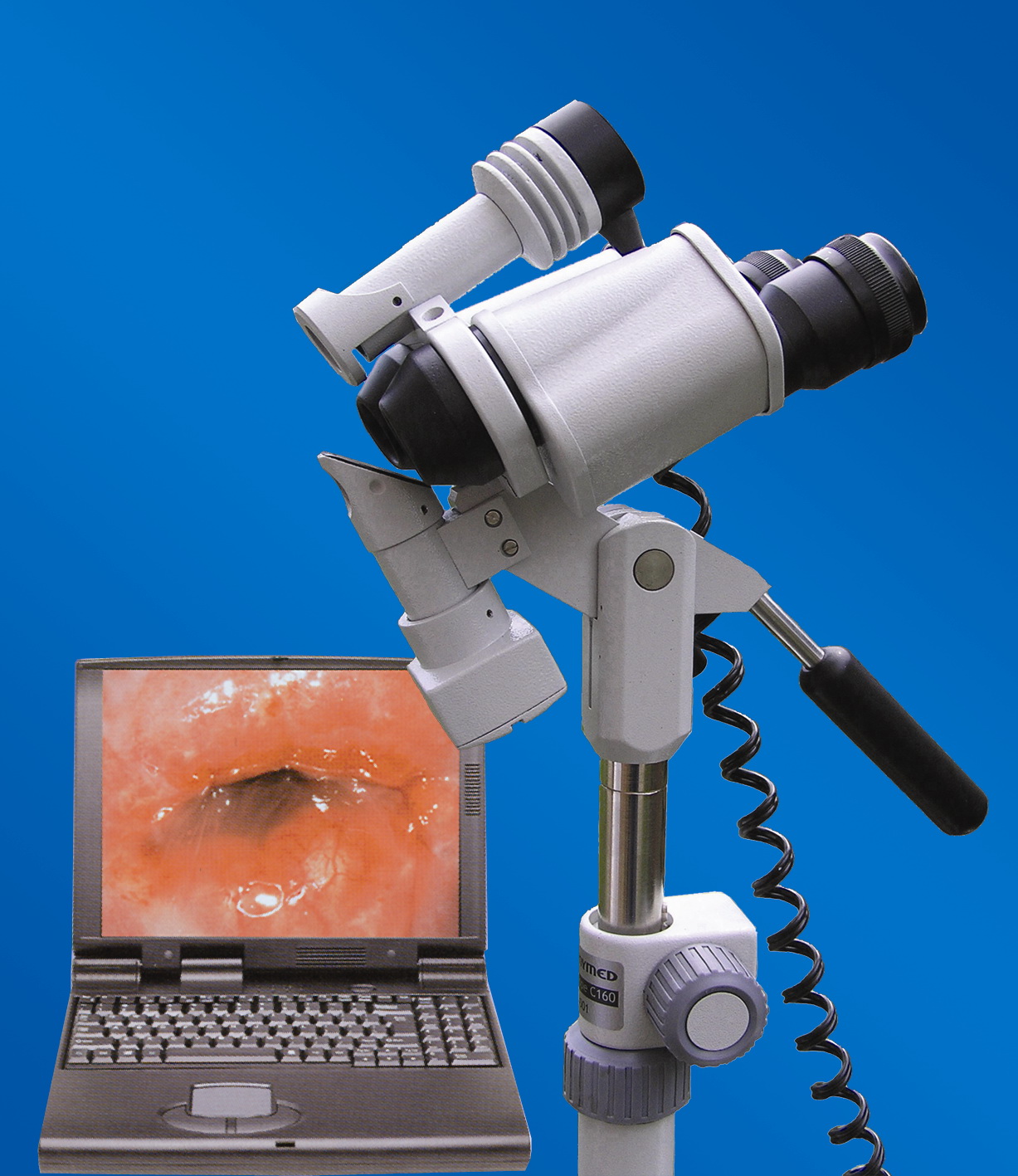What is hidden behind the term colposcopy? For which the colposcope is used? What diseases can be seen with the help of the colposcope? Read in this article.
Content
Colposcopy
 This is the study of the cervix under the microscope. Special microscope, allowing to study the appearance of the cervix, is called a colposcope, and the procedure – Colposcopy. In principle, any gynecologist is obliged to own this technique, so you can see the colposcope in the office in a conventional gynecologist. As a rule, a gynecologist uses a colposcope in order to say, there is erosion or not; as well as in order not to miss pictures, suspicious on malignant tumor. Specialist in the pathology of the cervix produces an extended colposcopy – T. E. Inspection of the cervix under the microscope after its processing with special color solutions (containing acetic acid and iodine).
This is the study of the cervix under the microscope. Special microscope, allowing to study the appearance of the cervix, is called a colposcope, and the procedure – Colposcopy. In principle, any gynecologist is obliged to own this technique, so you can see the colposcope in the office in a conventional gynecologist. As a rule, a gynecologist uses a colposcope in order to say, there is erosion or not; as well as in order not to miss pictures, suspicious on malignant tumor. Specialist in the pathology of the cervix produces an extended colposcopy – T. E. Inspection of the cervix under the microscope after its processing with special color solutions (containing acetic acid and iodine).
You are lying on a gynecological chair, the mirror has been introduced, the doctor moves a large device with eyepieces to the chair, turns on the light bulb and looks. This is a colposcope. It remains outside, its increase allows you to see the neck of the uterus.
The Colposcopy procedure is long enough (about 20 minutes), the doctor makes it sitting and silently. So get ready for long lying and do not ask the doctor that there. I can only answer you only when I hold a fully extended colposcopy.
The first coloring solution to be treated with the cervix - 3% acetic acid solution. It has a specific smell and can cause some pinching, completely tolerant. Acetic acid leads to vessels spasm, which allows the doctor to consider the cervix itself, and not its vascular network. To the color of the cervical acidic acid looks like a large pink spot, after - all the existing pathology is clearly highlighted. Acetic acid is poured into a mirror from the jar, and then the cervix rolled the cervix and looks into the colposcope.
Next solution – T. N. Solution of Lugola. It includes iodine, only not an alcohol solution, but aqueous, so the Lugol is not a pinlet at all. Normal, healthy cervical cells are painted with a solution of lugol, and pathologically changed – No. Therefore, this procedure is necessary to clearly see the boundaries of pathology.
If the treatment of solutions causes a strong burning – This is a sign of the inflammatory process. The concentrations of solutions are not calculated on the sensation, but only on coloring. Only the inflamed tissue has such an increased sensitivity.
Only extended colposcopy can help put an accurate diagnosis of cervical disease and determine its malignant; If it has not been done, the diagnosis is unknown. Erosion is an unexplored red spot under which anything can hide. Kolposcopist does not use this word, it makes a diagnosis, using generally accepted in the world terms.
Ectopia (pseudo-erosion)
What is most often called erosion. The presence of a cylindrical epithelium, in the normal range of the channel, on the cervix surface. A very frequent picture of young girls, often in virgins, with the beginning of sex life is complicated by inflammation.
The most common cause – congenital. Girls have a cylindrical epithelium in the norm goes beyond the channel borders. Then he gradually goes inside. This process takes place somewhere until 23-25 years. While the entire cylindrical epithelium has not passed inside, its remnants are visible on the surface – Etopopia. If it is not complicated by inflammation, it is a physiological rate that does not require treatment. Most often with the beginning of sex life in ectopia, microbes are settled, and it can no longer disappear independently and supports inflammation, then it must be treated regardless of age.
There are other reasons for ectopia – Violation of hormonal status (ovarian dysfunction), chlamydia, herpes and other infections.
Ecropion
Status evolving after childbirth - Switching the cervical channel outward. It looks just like erosion, but arises after delivery with the tip of the cervix, so the scars on the sides of the neck are visible. Unlike ectopia, never passes independently. It is treated surgically.
Leukoplakia
White plaque rising above the surface of the cervix – Plot of increased energization. More often is a sign of chronic infection, most likely – Virus. Necessarily requires biopsy and surgical treatment.
Condylomes
Pointed grown. Happen both on the outdoor genital organs and on the cervix, and in the vagina. Sign of papillomavirus infection, the main reason for the development of cervical cancer. When the cervix is located on the cervix, require mandatory biopsy and surgical removal.
Cysts of cable glands
In the cylindrical epithelium channel of the cervical cervix there are glands allocating mucus. With the healing ectopia, they remain under the increasing normal epithelium and continue to produce mucus, and the duct closes. Because of this, they stretch and form cysts. Sometimes their content can be infected and applied. Require autopsy and delete content.
Polyp cervical canal
Strusting of the cylindrical epithelium inside the canal. The reason may be infectious or tumor. Requires biopsy and removal.









